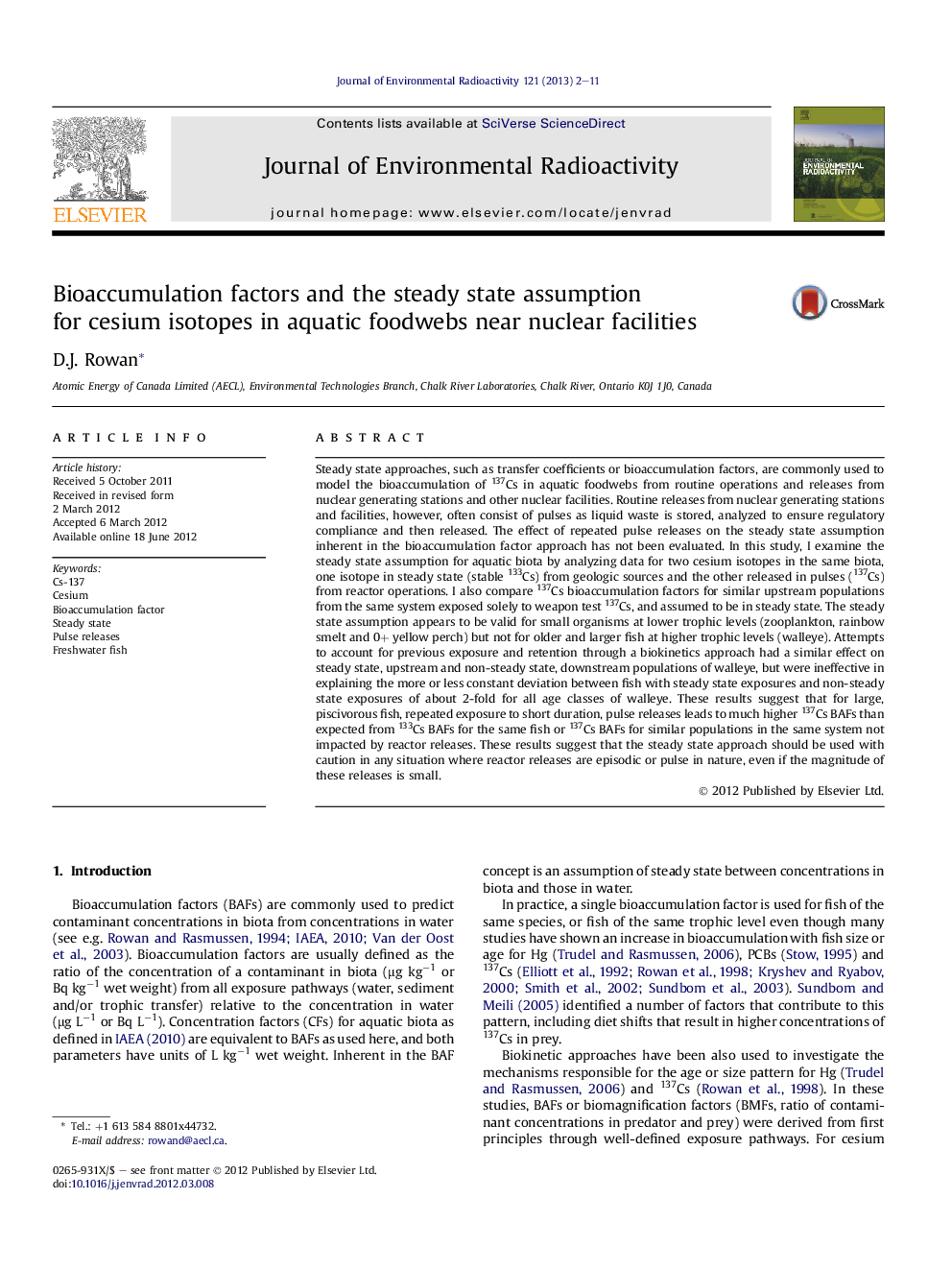| کد مقاله | کد نشریه | سال انتشار | مقاله انگلیسی | نسخه تمام متن |
|---|---|---|---|---|
| 1738154 | 1521612 | 2013 | 10 صفحه PDF | دانلود رایگان |

Steady state approaches, such as transfer coefficients or bioaccumulation factors, are commonly used to model the bioaccumulation of 137Cs in aquatic foodwebs from routine operations and releases from nuclear generating stations and other nuclear facilities. Routine releases from nuclear generating stations and facilities, however, often consist of pulses as liquid waste is stored, analyzed to ensure regulatory compliance and then released. The effect of repeated pulse releases on the steady state assumption inherent in the bioaccumulation factor approach has not been evaluated. In this study, I examine the steady state assumption for aquatic biota by analyzing data for two cesium isotopes in the same biota, one isotope in steady state (stable 133Cs) from geologic sources and the other released in pulses (137Cs) from reactor operations. I also compare 137Cs bioaccumulation factors for similar upstream populations from the same system exposed solely to weapon test 137Cs, and assumed to be in steady state. The steady state assumption appears to be valid for small organisms at lower trophic levels (zooplankton, rainbow smelt and 0+ yellow perch) but not for older and larger fish at higher trophic levels (walleye). Attempts to account for previous exposure and retention through a biokinetics approach had a similar effect on steady state, upstream and non-steady state, downstream populations of walleye, but were ineffective in explaining the more or less constant deviation between fish with steady state exposures and non-steady state exposures of about 2-fold for all age classes of walleye. These results suggest that for large, piscivorous fish, repeated exposure to short duration, pulse releases leads to much higher 137Cs BAFs than expected from 133Cs BAFs for the same fish or 137Cs BAFs for similar populations in the same system not impacted by reactor releases. These results suggest that the steady state approach should be used with caution in any situation where reactor releases are episodic or pulse in nature, even if the magnitude of these releases is small.
Journal: Journal of Environmental Radioactivity - Volume 121, July 2013, Pages 2–11